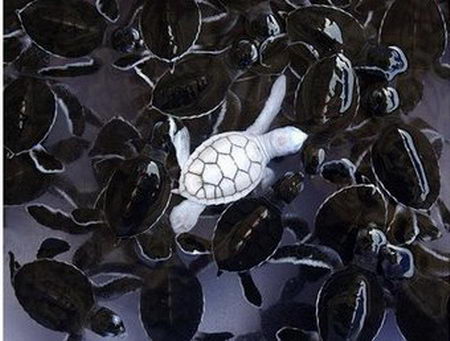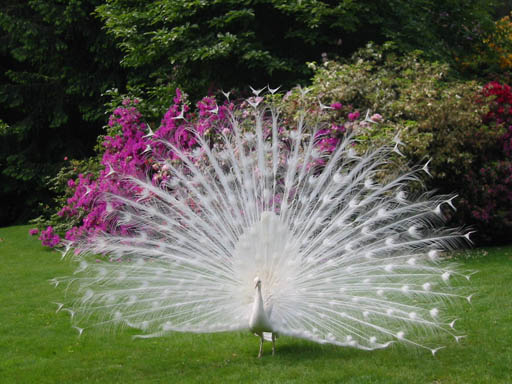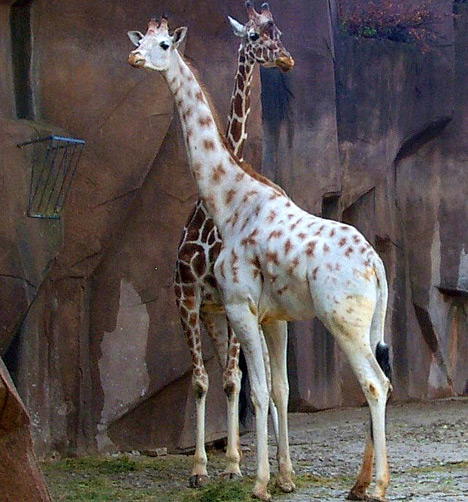10 worlds most dangerous animals
Rhinos, hyenas, alligators – devastating human predators, right? Wrong! Though an attack by one of these beasts would surely mean bad news, they’re statistically least likely to kill a human. Check out the most deadly animals in the world, discover how they mete out their punishment and, most importantly, find out how to avoid them!

The mosquito
Yes, the humble mosquito. What we Brits regard as an annoying pest is actually the most dangerous creature on the planet, thanks to its ability to spread disease with alarming efficiency. Best known for spreading deadly malaria, mossies also spread elephantiasis, yellow fever, dengue fever and West Nile virus, which was recently introduced to the US and is now prevalent in all states.
Responsible for: An estimated 2-3 million fatalities a year.
Hangs out in: Worldwide; harmful in Africa, Asia and North America.
Method of dispatch: Using serrated mouth parts, female mosquitoes pierce the skin and inject saliva containing a thinning agent to liquidise the blood. Most people won’t know that they have been bitten until the immune system reacts, resulting in red, itchy bumps that continue to itch for days after the initial bite.
Useful avoidance techniques: Mosquito nets treated with DDT are the most effective way to keep them at bay, as well as combative sprays and treatments that can be applied directly to the skin. Wear light-coloured, long clothes in the evening. If travelling to malaria zones, ensure that you take your full course of tablets before, during and after your stay.

The venomous snake
Though there are more than 2,000 species of snake, 450 of which are venomous, only 250 are capable of killing a man. That’s little consolation to the thousands who meet a nasty death due to snake bites each year – it’s usually members of local populations who bear the brunt as they live and work where snakes inhabit and usually wear no protective gear.
Responsible for: An estimated 50-125,000 fatalities a year.
Hangs out in: Africa, Asia and North America.
Method of dispatch: Snakes are very fast and any part of the human body is a good place for a bite, seeing as the venom can flow into the bloodstream within minutes; although those near major veins and arteries will travel faster. Snakes use their venom to paralyse their prey. A fully grown king cobra can rear up so it looks a man in the eye; others can spit venom into the eye. Nasty.
Useful avoidance techniques: Unsurprisingly, most people come a cropper when they try to harass a snake or draw close to it. Snakes will usually only attack if they’re feeling threatened so the short answer is: stay away! Wear stout boots if hiking and check either side of paths. Don’t mess about looking under rocks or fallen vegetation as you’ll get more than you bargained for. If you come across a snake, back away very slowly, as it can strike to half its length and sudden movements are likely to alarm it.

The scorpion
Highly deadly and twice as ugly, the scorpion is a nasty critter that is probably responsible for more deaths per year than recorded, due to the isolated places they hang out and probable lack of access to antivenin. However, out of an estimated 1,500 species of scorpion worldwide, only around 25 are regarded dangerous.
Responsible for: An estimated 800-2,000 fatalities a year.
Hangs out in: Worldwide; particularly Africa, the Americas and Central Asia.
Method of dispatch: Scorpions paralyse their prey by pumping deadly venom through the obvious curved stinger at the end of their tails. As with all venom, humans are particularly susceptible if they are allergic – though the African spitting scorpion, who scuttles around Africa, is the most venomous, as it is able to spray venom up to a metre. Yuk.
Useful avoidance techniques: Scorpions become active at night and lie low during the day, so be sure to shake out any bedding, clothing or anything close to the ground before use. Be vigilant at night and wear thick socks.

Big cats
These big cats certainly mean business. With destruction of their natural habitat and a decline in prey species, particularly concerning the tiger and North American mountain lion or cougar, attacks on humans are increasing. The African lion is the biggest and most feared of big cats, but holidaymakers on safari are 100 per cent safe viewing from a vehicle, unless they decide to take a closer look and step down. Mountain lions are found in many national parks and are responsible for six attacks a year in the US and Canada.
Responsible for: An estimated 800 fatalities a year.
Hangs out in: Africa, North America and India.
Method of dispatch: Tigers generally attack from the back and look to bite the jugular or break the neck. Mountain lions stalk their prey and often attack from a vantage point. Presumably they then set about mauling the victim in a manner identical to that we’ve all seen in countless nature programs.
Useful avoidance techniques: To avoid a heinous attack by a big cat, stare them in the eye and don’t look away. To make yourself appear larger by opening your coat; they are unlikely to attack a larger animal, particularly in the case of a mountain lion. DO NOT turn and run – you may as well flash a neon sign asking to be attacked. They can outrun you in any case. Shout, scream and throw stones. If one has you, punch its nose and eyes.

The crocodile
Crocodiles are dreaded prehistoric creatures capable of wreaking a terrible punishment on puny human flesh. North American, Estuarine and Nile crocodiles are the most dangerous and probably kill more people yearly than figures show due to the isolated areas where attacks are likely to take place and distance from help. One meal will keep a crocodile sated for a good while, so they like to wait in the water for the perfect time to strike.
Responsible for: An estimated 600-800 fatalities a year.
Hangs out in: Africa and Australia.
Method of dispatch: With terrifying speed, crocodiles can launch themselves out of the water like a missile and latch hold of their prey. They then go into a death roll, spinning the victim around and around to disorientate, thereby lessening its chance of escape.
Useful avoidance techniques: Straight from the society of stating the obvious: do not swim in areas where there are crocodiles. It may be hot, and you may want a swim, but the croc will see you coming and the rest doesn’t bear thinking about. If you’re unfortunate enough to be grabbed, shout, scream, claw… and pray.

The elephant
Despite their friendly and approachable image thanks to zoo feeding times, these herbivores kill an alarming amount of people every year. Elephants are unpredictable creatures, and have been known to kill zookeepers who have been with them for as long as 15 years. It is recorded that even the tamest of elephants can attack without warning, though it is thought that most elephants do not realise the harm they do with almost no effort.
Responsible for: An estimated 300-500 fatalities a year.
Hangs out in: Africa and India.
Method of dispatch: Considering their huge size – the average elephant weighs over 6 tons – they trample and gore using their fearsome tusks and are capable of causing untold amounts of devastation.
Useful avoidance techniques: General advice on avoiding an elephant attack seems to be: don’t startle the beast; he is more likely to charge if he feels intimidated. If the elephant seems intent on charging, make as much noise as you can and try to put it off – otherwise scale the nearest tree (large enough so that the elephant cannot knock it down, of course).

The hippopotamus
At first glance, these wallowing river-horses appear to be bulky, lazy beasts and not the fearsome predators you would expect to have a habit of mauling humans. However, with gaping mouths that can open four feet wide and swinging sledgehammer heads, as well as the fact that they can outrun us on land, these highly aggressive animals have plenty of scope for destruction and are considered one of the most dangerous of African animals.
Responsible for: An estimated 100-150 fatalities a year.
Hangs out in: Lakes, rivers, wallows – in fact any water – in Africa.
Method of dispatch: Hippos will charge, trample and gore victims with alarming ferocity, often when they are blocked from deep water or someone is standing between the hippo and their calf. They have also been known to upturn boats and canoes without provocation and feast on the victim within, despite being herbivores.
Useful avoidance techniques: Surprising hippos is a big no-no. If canoeing in hippo waters, rap on the side of the boat with your paddle to warn any wallowing occupants that you are close by, therefore giving them a chance to move to deeper waters. If you surprise them on land where they feel most vulnerable, do not block their escape route to water.

Jellyfish
The sting-masters of the sea, Jellyfish are usually passive drifters who use their tentacles to dredge up small prey. However, anyone who becomes entangled with a jellyfish will experience degrees of pain from a nasty nip to excruciating pain, depending on the species. The box jellyfish is one of the most venomous marine creatures in the world; a sting can kill a man within minutes and most fatalities occur following a brush with a toxic jelly like this.
Responsible for: An estimated 100 fatalities a year.
Hangs out in: Northern Australia, Papua New Guinea, Malaysia, Indonesia, the Philippines, Thailand and Vietnam.
Method of dispatch: The jellyfish unwinds its coiled stinging tentacles, fires them at the victim and then pumps their venom to paralyse the unfortunate recipient, usually manifesting itself as cardiac arrest in humans.
Useful avoidance techniques: If swimming in an area where there are known jellyfish, wear a sting-suit. However, if you are stung, get out of the water pronto and apply vinegar to any stings remaining embedded in the flesh to remove the venom, then brush or lift off using a credit card, stick or similar.

The shark
Sharks have a terrible reputation thanks to films such as Jaws and Deep Blue Sea, but it’s one not entirely without cause. It seems that although great whites are often blamed for unprovoked attacks on humans, it is more likely to be down to those snappy bull sharks, who are very aggressive. Out of 360 species, only four are known killers: tiger, great white, oceanic whitetip and bull sharks. However, as we’ve seen with bears, although there are a high number of shark attacks, actual fatalities are fairly low.
Responsible for: An estimated 100 fatalities a year.
Hangs out in: Florida, Australia, Hawaii and South Africa.
Method of dispatch: Sharks attack the only way they can – by lunging with fearsome teeth. Sharks can grip their prey easily in their powerful jaws and are capable of biting through almost anything.
Useful avoidance techniques: Don’t wear yellow or orange, as sharks have good eyesight and these colours in particular seem to irritate them. If you are cut, get out of the water as they will smell blood from miles away. Engage in your aquatic recreation in groups – sharks are more likely to attack solitary prey. If you are attacked, punch the shark on the nose and claw the eyes and gills as these are sensitive spots.

The bear
Forget gentle Ben – when a bear rears on its hind legs you know you’re in trouble. Although bears have a fearsome reputation, you are statistically more likely to survive a bear attack than to perish, but that’s small consolation to those who are faced with a bristling bear. With five attacks in Canada in 2005 alone, it seems that they’re on the increase due to human destruction of, and encroachment on, bears’ natural habitat.
Responsible for: An estimated 5-10 fatalities a year.
Hangs out in: North America, Canada, North Pole, Russia and isolated pockets around the world.
Method of dispatch: There are many different sub-species of bear and not all of them are vicious. However, the polar, black and grizzly varieties are deadliest. Bears will trample, maul and generally savage their prey until they’re frightened off or finish the job; and will attack for a variety of reasons, hunger being one. You should always keep food well away from your camp.
Useful avoidance techniques: If you are faced with an angry bear (categorised by snorting, false bluffs, ground beating, etc), slowly back away from the bear, watching it all the while. DO NOT turn and run. If it continues to act aggressively, you should respond in kind by shouting and throwing sticks and stones while continuing to back away. If a bear is upon you, fight back as you will stand a better chance of survival than if you play dead.































